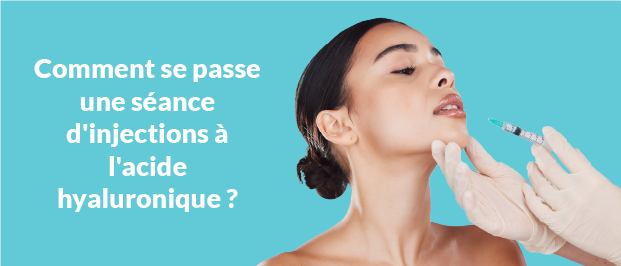In recent years, aesthetic medicine has been discussing a lot about non-invasive interventions. The injection of hyaluronic acid is often mentioned among them. For the novice, the term may raise questions, even fears. Thus, before forming a clear idea on the subject, it is preferable to take a closer look at what it actually consists of.
What is hyaluronic acid?
Contrary to what one might think, thehyaluronic acid is naturally found in the body, particularly in cartilage and skin. In the medical field, it is involved in ophthalmic transplants, during post-operative care, and in the treatment of gastroesophageal reflux. The moisturizing capacity of thehyaluronic acid allows specialists to the aesthetic medicine to develop different products and techniques aimed at correcting certain skin imperfections. Hyaluronic cream or hyaluronic solution to inject, the results prove to be astounding. Furthermore, the main asset of thehyaluronic acid is the fact that it is used in different fields.
What are the effects of hyaluronic acid?
The uses of thehyaluronic acid in the service of beauty proving numerous, and its derivative products are just as many. The injectable gel Jivala Derm 1ml at Centrale Fillers is a concrete example. It allows, in broad terms, to correct the effects of aging. It is moreover the first attraction of thehyaluronic acid : smooth the skin! Injections are performed on problem areas such as the forehead, cheeks, around the eyes, and mouth. Thehyaluronic acid also allows to restore volume to certain parts of the body. In this case, it is often injected into the cheek, temples, nose, and even intimate areas. Lastly, it is difficult to talk about...hyaluronic acid without mentioning its moisturizing properties. Comparable to that of a sponge, its hygroscopic properties allow it to retain water and thus diminish fine lines.
How does a hyaluronic acid injection session proceed?
It is important to know that a session of injections ofhyaluronic acid rarely happens, if ever, alone. Indeed, resorting to the mesotherapy, which is defined as a discipline aimed at injecting a product superficially, often takes place in several stages. The duration of each treatment is determined by the practitioner according to the client's needs. Furthermore, the first step preceding any injection requires a interview with the specialist. It is time to identify possible obstacles to the implementation of the intervention. Indeed, thehyaluronic acid injection is not suitable for everyone. Pregnant women, individuals with coagulation disorders, and those with herpes cannot undergo this invasive procedure. The same applies to those allergic to any of the components of the injectable product. Once the expectations and possibilities are defined, many practitioners proceed to take photos for the essential before/after comparison. Then comes the moment of the injection, which must be performed under impeccable hygiene conditions and with a syringe for single use. The depth of the injection varies depending on the areas to be treated.
It can be on the surface (principle of the mesotherapy) or less superficial (for facial volume corrections). These perforations are not particularly painful, but they can be uncomfortable. Thus, to perfect the care of individuals who are hypersensitive to pain, the practitioner may decide to apply a anesthetic cream one hour before the injections. After the procedure, soothing products may also be used to prevent the appearance of swelling or bruising. For tangible effects, 4 to 6 sessions are necessary. It is imperative that they be spaced a few weeks apartAt the end of the treatment, another photo will be taken to assess the results visually.































































